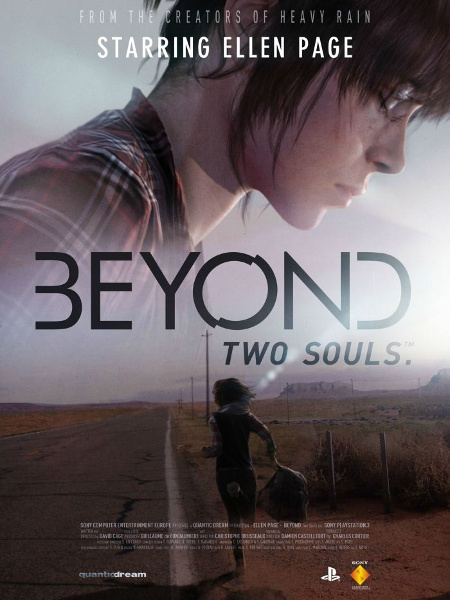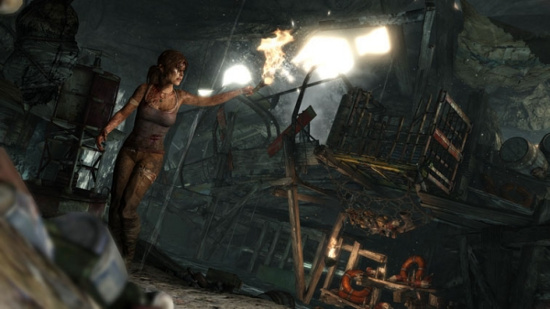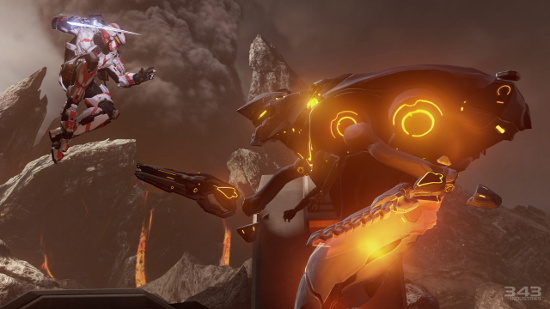The Queen’s diamond jubilee could not have been better timed for two reasons. Firstly, it provided two days off work that lined up perfectly with the opening of the annual Electronic Entertainment Expo in LA, meaning I could watch all the live-streamed press conferences with friends. And secondly, the weather was rubbish so I did not even need to feel guilty about staying indoors. Rather than a continuous stream of gaming related posts this week, I thought it best to save my thoughts on the big announcements for a single post afterwards. Take a deep breath: this could be a long one.
The easiest way to tell what to expect from the Big Three (Microsoft, Sony and Nintendo) is by considering the drinking game rules for the conferences. This year one would drink every time:
- tacked-on, unnecessary use of Kinect/motion controls are announced;
- a celebrity clearly does not understand the game (s)he is promoting; or
- dubstep is heard (seriously, every other trailer?).
Rule 1 alone would have ruined the livers of those watching the Microsoft conference, although (perhaps in the wake of Skyrim) they are now pushing far subtler integration for core games, based primarily around voice rather than motion. In Splinter Cell: Blacklist, for example, the player can attract a guard’s attention by calling out to them, “hey you!” whilst it was suggested that Fifa 13 may penalise players for swearing on the pitch! The big announcement was Xbox SmartGlass, which allows smartphones and tablets to integrate with the Xbox. The most promising thing being that Microsoft is not trying to push this as a selling point for Windows Phone and Windows 8 tablets, but is supporting Android and iOS devices too. It is the smart move but not one I was sure they would make.
Sony, meanwhile, largely ignored the floundering Playstation Vita and instead focused on its strength in console exclusives. The Last of Us, Naughty Dog’s post-apocalyptic follow-up to the Uncharted trilogy is looking superb, with the player character aided by the young girl he is protecting (who now looks slightly less like Ellen Page than in the initial trailer). Rather than shooting away or being entirely passive like most companion AI, she instead helps out primarily when the player needs it, buying some extra breathing room. Meanwhile Quantic Dream’s awkwardly titled Beyond: Two Souls, using the motion capture and engine from the Kara tech demo, actually does star Ellen Page. The actual gameplay is up in the air, but it looks like a fast-paced supernatural adventure with a focus on subtle, realistic human interaction.
Nintendo had a lot to prove with the Wii U following a somewhat muted response to the console announcement last year. It became clear that they are serious about trying to win back core gamers and not merely courting the casual market they found with the Wii. However, despite a reasonable display of third party support and an exclusive zombie title ZombieU, it remains unclear why we should care. Its share price dropped following the somewhat lacklustre performance, wherein the most promising announcement was Lego City: Undercover, an open world GTA-style city in which the player solves crimes, along with the usual tongue-in-cheek Lego humour.
Interestingly, between Microsoft’s SmartGlass and Sony’s Vita integration with the PS3, both now have effective “tablet” support with the potential to undermine the uniqueness of the Wii U’s control system in the future. However, this could well be a blessing for Nintendo — if developers are able to incorporate similar functionality into all three, there is a greater incentive to support the Wii U with new titles where Wii support was often overlooked because of its radically different controls.
On to the big game announcements:
Watch Dogs from Ubisoft Montreal generated the biggest buzz, having been kept totally under wraps and debuting with both a trailer and gameplay. Think Matrix-style hackers with access to a glut of personal information on everyone, operating in an open world city by way of GTA and Deus Ex. It hints at a whole network of hackers collaborating to protect one another, though it is unclear whether this represents multiple protagonists, co-op or an MMOG. Big budget new IP in a world of sequels is always a welcome surprise.
Assassin’s Creed III appeared in pretty much every press conference and is looking great, despite my apathy towards Revelations, the last title in the series. The American Revolution setting freshens things up wonderfully and, although I had concerns about the open-world approach, climbing through the trees seems to make traversal as comfortable as in cities. Also: sailing ships.
Star Wars 1313 looks like it could be the remedy for those not enthused by recent titles in the franchise (and indeed, the franchise itself of late). Set on galactic hub Corsuscant during the original trilogy era it eschews the now-ubiquitous Jedi and lightsabers in favour of a mature bounty hunter tale. And using a tweaked version of the very latest Unreal 3 engine, it looks gorgeous.
Tomb Raider is a game Crystal Dynamics have earned the right to make. After paying their dues with a series of sequels faithful to the original games, Lara is now very much theirs, so they are rebooting the character with an origins story. And it looks brutal. Enough so that it has stirred some controversy as a result of the experiences through which she is put, but that is what forges her will to survive and we root for her throughout. Tycho at Penny Arcade rightly refers to both this and The Last of Us as fundamentally disempowerment fantasies.
Dishonored is the other big new IP, offering a surprising level of creative freedom in its assassination gameplay, set in a cyberpunk world courtesy of the designer of Half-Life 2’s City 17. The player has a large arsenal of Bioshock-style powers at his disposal in order to get the job done in a variety of ways. The debut trailer was great but the recent gameplay trailer left me slightly underwhelmed so I was glad to see much more polished demos on the show floor. Really the tagline alone is enough to win me over: revenge solves everything.
Halo 4 is, at first glance, much as one might expect. However it is clear that while maintaining its core, 343 Industries are keen to strike a new direction with the franchise they inherited from Bungie. In single player that means a new world inhabited by the Prometheans, with links to the Forerunners and new weaponry. Meanwhile multiplayer Spartan Ops offers new episodic, narrative co-op missions each month.
Those are what I took away, so over to you. Anything I missed? What was your game of the show?









